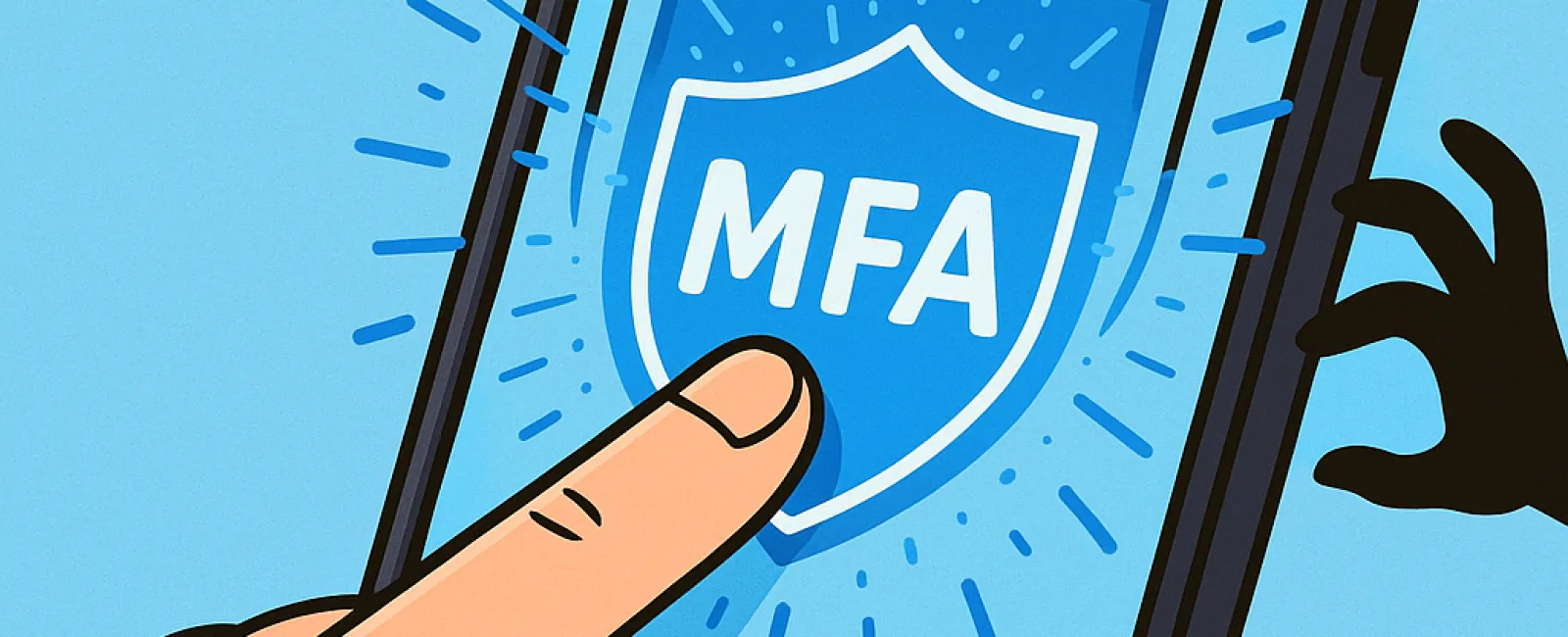October 27, 2025
Just as you wouldn't drive without buckling your seatbelt or leave your office unsecured overnight, you shouldn't navigate the online world without enabling multifactor authentication (MFA).
MFA acts as a vital second barrier protecting your digital accounts. Instead of relying solely on a password — which can be vulnerable to theft, guessing, or phishing — it requires an additional verification step, such as a text message code, authentication app confirmation, or biometric scan like a fingerprint. This means even if someone steals your password, they won't gain access without that crucial extra layer.
A Simple Extra Step Yields Massive Security Benefits
Think of your password as locking your front door; MFA is like activating an alarm system before bedtime. While not mandatory, it ensures that if one protective measure fails, another stands guard to keep you safe.
Essentially, MFA adds a swift, additional check to confirm your identity when logging in. Though known by various terms such as "two-step verification," "two-factor authentication," or "one-time password," the concept remains the same: requiring two or more authentication factors before granting access to sensitive data.
MFA takes many forms, including verification emails during account creation, security questions for banking, text message codes, push notifications, and automated phone calls—all mostly just a tap or a quick step.
Real-World Protection: How MFA Stops Cyber Threats
While MFA is quick and convenient for users—simply entering a code or tapping a notification—it drastically complicates attempts by cybercriminals. If someone tries to hack your account, MFA instantly alerts you by requiring a special code, giving you time to update your credentials and prevent data theft.
Moreover, MFA thwarts unauthorized access even if a password has been compromised or an employee is deceived into sharing their login. According to a Microsoft study, enabling MFA reduces the risk of account breaches by over 99.2%, and for accounts with MFA enabled, the protection rises to 99.99%.
Essential Accounts to Protect with MFA and How to Enable It
Prioritize applying MFA to these critical accounts:
- Banking and financial apps
- Email and cloud storage services
- Social media platforms
- Work-related logins containing client or sensitive company data
Setting up MFA is typically a straightforward process. Many platforms provide built-in options—simply activate the method that suits you best and integrate it into your daily routine. Utilizing an authenticator app can also enhance security for staff accounts.
In summary, enabling MFA is a quick, cost-free way to protect most accounts against hacking attempts. Investing just a few minutes now can prevent potentially devastating data breaches and prolonged recovery later.
The simplest way to activate MFA and ensure seamless security is by contacting your IT provider. A skilled Managed Service Provider (MSP) can guide you through the process efficiently. If you're seeking cybersecurity expertise, click here or call us at 760-770-5200 to schedule a Quick and Easy Call with our team today.



